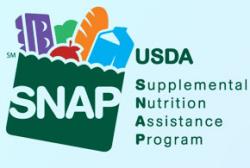 In a March 3rd press release, the USDA outlined programs that have been modified to relieve hunger that has been exacerbated by COVID-19. Programs include:-
In a March 3rd press release, the USDA outlined programs that have been modified to relieve hunger that has been exacerbated by COVID-19. Programs include:-
- Increasing SNAP benefits by 15 percent. Following the allocation by Congress, benefits were increased by 15 percent from January through June 2021 providing an additional $128 per person per month to families in need. Two-thirds of the $7 billion allocation will be directed to families with children. The Administration intends expanding increased benefits through September.
- Increasing access to online purchasing. Access to food has been limited during the COVID pandemic. The SNAP online purchasing pilot has been extended beyond the original eight states to more than 1.5 million households in 46 states and D.C. It is intended to invest in modernization of electronic benefit transfer (EBT) to the benefit of recipients, retailers, and farmers.
- Extending administrative funding to states. The Administration intends expanding SNAP administrative funds without requiring a state match extending from Fiscal 2021 through 2023.
- Eliminating inequities in SNAP emergency benefits. It was disclosed that approximately 20 million people in the lowest income demographic have not received emergency benefits extended by Congress during 2019. This group includes households with children or with the elderly or disabled.
- Promoting healthy food purchases under SNAP. The Thrifty Food Plan will be updated to promote consumption of healthy food choices to benefit consumers.
 Childhood hunger is an important issue complicated by COVID due to school closures. Approximately 22 million students relied on reduced-priced or free school meals prior to March 2020. USDA has implemented the following programs: -
Childhood hunger is an important issue complicated by COVID due to school closures. Approximately 22 million students relied on reduced-priced or free school meals prior to March 2020. USDA has implemented the following programs: -
- Waivers and flexibilities to schools deviating from traditional group settings and meal times to allowing pick-up. Funds will be extended to local school boards to compensate for increased costs.
- Increasing participation in the Pandemic EBT Program. Daily benefits have been increased by 16 percent providing a family with three children an extra $50 per month.
The Administration is also concerned over the “Special Supplemental Nutrition Program for Women, Infants, and Children” (WIC). Faced with declining WIC involvement, the American Rescue Plan will address the needs of eligible mothers and children by establishing a national outreach campaign to publicize the benefits of WIC. Cash vouchers under the WIC program allow participants to purchase fruits and vegetables at both grocery stores and farmers’ markets. Other initiatives introduced by the USDA include support for college students, many of who are now eligible for SNAP benefits, and to address the needs of homeless individuals under 25 years of age in emergency shelters. The USDA is also allocating an additional $1.25 billion in funding to support food purchases by states. An allocation of $290 million is available to food banks to facilitate receiving, storage, and distribution of additional quantities of foods.